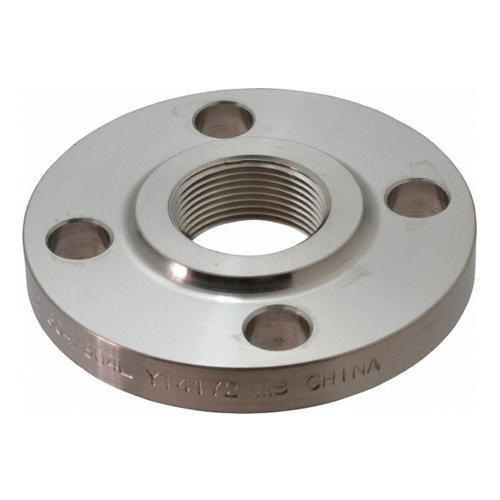What is A Threaded Flange?

Threaded flange is a pipe fitting that has threads on one end to fasten to the piping system and an open-ended, flat plate on the other end. The threaded flange allows for easy installation of pipes in conjunction with gaskets or seals. It also provides protection against leakage from inside the piping system. Threaded flanges are also known as companion flanges / screw flanges / NPT flanges.
The Purpose of Threaded Flanges
The purpose of threaded flanges is to allow pipes to be connected or disconnected with ease from either side by simply rotating the bolts on each end clockwise or counterclockwise respectively.
Threaded Flanges are used in a variety of applications to connect piping systems. They have the advantage over slip-on flanges because they make it easier for multiple sizes and types to be connected without needing additional equipment or welding. This is especially useful when you need an immediate connection for emergency purposes, allowing workers to get on site quickly while still having a safe and secure connection.
Perfect Way To Install A Threaded/Companion Flange
Threaded flanges are installed in the same way as slip-on flanges, with bolts or other fasteners tightened down to hold them securely in place. Determining what type of thread is needed for your system is essential when ordering threaded flanges.
When you install a threaded flange on a pipe, the installation process is very simple. First, clean out all debris from inside of the piping system in order to create space that will allow for easy insertion of your new flanges and bolts. Next use either a wrench or socket set to tighten down the nuts onto the bolt heads. Finally, ensure that the seals are properly seated in order to prevent any leaks.
Threaded/Companion Flanges Working Process
When you use a threaded flange for your piping system it helps create an airtight seal between two different sized pipes or tubing systems. This is accomplished by using either rubber O-rings, metal gaskets, or even leather. The following is how a Threaded Flange works:
Threaded flanges have internal threads at their end which join with external threads on piping, cabling or tubing. The two components are then joined together using bolts or screws to provide a tight seal and prevent leakage.
Types Of Threaded Flanges
Threaded Flange comes in various types including:
- Slip-On
- Socket Welding
- Blind (Oblique)
- Lap Joints (Grooved)
- Studded Withdrawal Types
- Inverted Groove Type
Applications:
They are often used in the petrochemical, power, and oil industries. Threaded Flange fittings have many uses and can be installed in both new construction projects and repair work.
Advantage:
The main advantage to using threaded flanges is the ability to easily connect and disconnect piping systems without having to disturb the entire surrounding system in order to make an adjustment. Another benefit is the threaded flange's ability to help create an airtight seal that will prevent any leaks.
Some Most Frequently Asked Questions About Threaded Flanges
1. When should It Not Be Used?
There are some instances in which using threaded flanges may not be the best option, such as if you cannot attach them with bolts or screws from either side. Another instance when this type of flange may not be the best option is when you need to connect two pieces that are made from dissimilar metals.
2. How is It Different from Other Flanges?
Threaded flanges are different than many other types of flanges because they have bolts or other fasteners on them which allow for elevation adjustments as well as quick and easy installation. This type of flange is also different because it allows for separate piping systems to be connected together.
